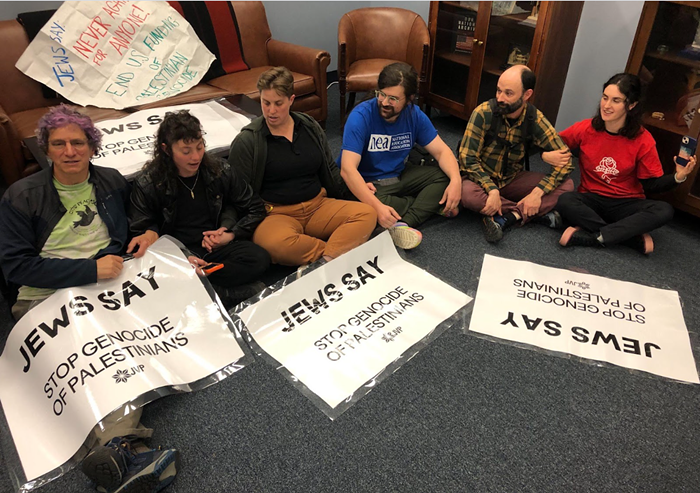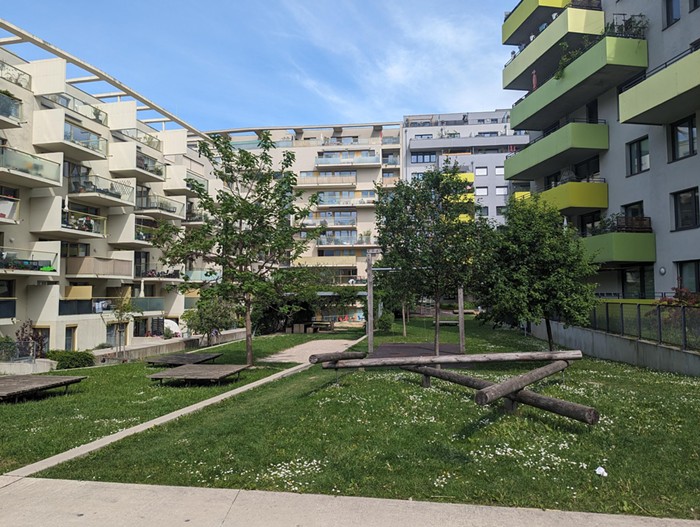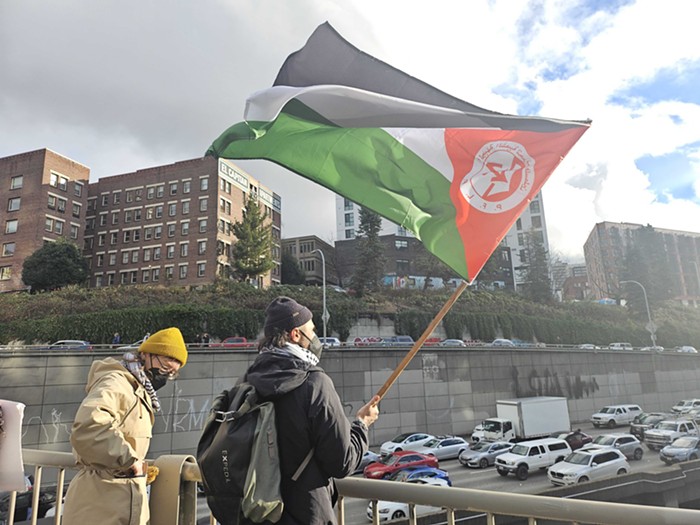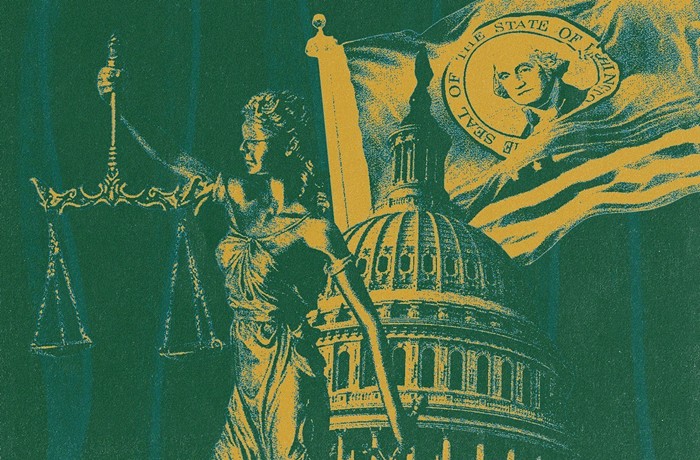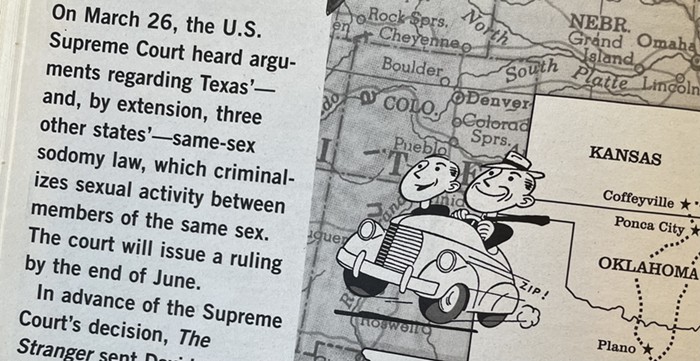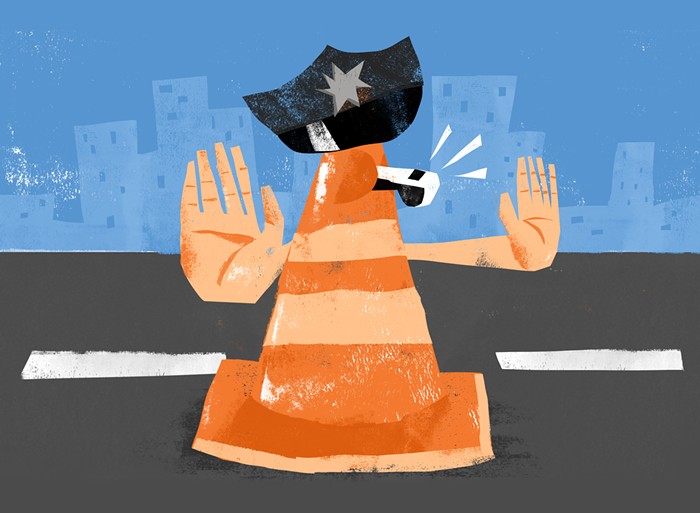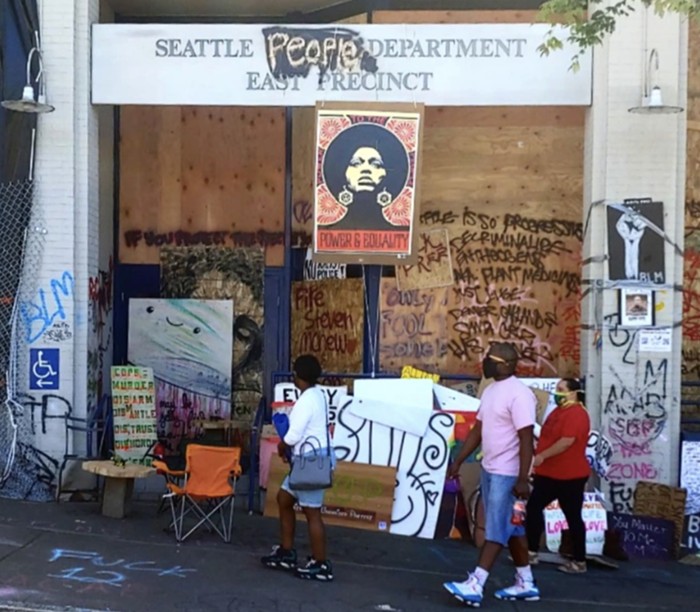A few weeks ago, I met with community members at the intersection of 33rd Ave NE and NE 125th St. After years of neighborhood advocacy, the City of Seattle is finally installing a stop light and crosswalk so community members can access the bus stop without navigating four lanes of busy traffic or a long detour along uneven sidewalks to the nearest safe crossing.
That crosswalk is just one example of an enduring car-centric transportation system that leaves neighborhoods fighting for one crosswalk and one block of sidewalk at a time. It shouldn’t be so hard to make the changes we need to have a city that works for us. With the next transportation levy, this year we have a once-in-a-decade opportunity to change that. It is an opportunity we cannot afford to miss.
Mayor Bruce Harrell and city staff are currently designing our next transportation levy, a multi-billion dollar plan that will dictate our investments and transportation priorities for the next decade–the levy typically funds 30 percent of the budget for the Seattle Department of Transportation.
The city is filled with infrastructure problems that need to be solved: Our transportation system is the biggest contributor of greenhouse gas emissions, it’s inaccessible to many communities, and inequitable and nonexistent infrastructure means that traffic deaths are going up, not down.
Yet our mayor is rumored to be considering an austerity levy focused on street maintenance and repaving that does not prioritize these critical investments and is too small to address them. And instead of making the necessary improvements to our walking, rolling, transit, and electric charging network, a short-sighted levy will only succeed in digging us further into car-dependency.
Seattle can dream bigger. We can create a city where every person is a step away from reliable, convenient transit and a connected network of bike lanes, multi-use trails, and accessible sidewalks. Seattle can become a city of walkable neighborhoods that support thriving local business and clean air with green transit that allows people traveling into Seattle for work, school, and cultural activities to have less stressful, less expensive, and far more sustainable mobility options.
These are ideas fully supported by the Mayor’s ambitious climate change framework guidelines, the newly released Seattle Transportation Plan, and every SDOT pedestrian, bike, ADA, and equity plan. But the reality is that despite similar promising language in the past, the City is nowhere on track to meeting the ideals we all agree on.
Take sidewalks, which are the foundation of a transportation system and a lifeline for pedestrians, especially elders, people with disabilities, and children. Despite an increase in investments over the last nine years, SDOT has built less than 2% of Seattle’s total missing sidewalks. At this pace, it will take Seattle 1,800 years to complete its sidewalk network.
For people with disabilities, the 1,800-year wait for reliable sidewalks has ramifications that carry into every aspect of our lives. As a wheelchair user, the heavy rains and atmospheric rivers last fall meant flooded sidewalks and light rail stations that not only made my commute to work nearly impossible but caused my wheelchair bearings to rust seemingly overnight. For months it was difficult and exhausting to move even within my apartment as I waited for new parts. This is an all-too-familiar story for people whose canes, walkers, and wheelchairs are repeatedly damaged and worn by broken sidewalks.
Unsafe crossings and missing or inaccessible sidewalks that force pedestrians into traffic on roads with dangerously fast cars mean that Seattleites will continue to be killed and injured. These crashes will continue to disproportionately impact people of color, people with disabilities, and communities in District 2.
Despite Seattle’s Vision Zero plan to end traffic deaths and life-altering injuries by 2030, Seattle has yet to fully fund critical safety projects. Nine years into Vision Zero and annual deaths are increasing. The next levy needs to move beyond maintaining dangerous infrastructure and commit to redesigning safe streets for all users.
The transportation sector is also the largest driver of Seattle’s greenhouse gasses. Fighting climate change depends on making investments in transit, sidewalks, multi-modal lanes, and charging infrastructure. If we continue the status quo, cars will continue to be the most convenient and sometimes only option even for short trips, and we won’t come anywhere close to meeting our carbon reduction targets.
It will take a massive shift in how we think about and fund our transportation system to accomplish our visions for transportation. Ten advocacy organizations, including Disability Rights Washington, recently released a report outlining the level of investment needed over the next eight years to meet our mobility, safety, equity, maintenance, and sustainability goals. Seattle will need over $3 billion to build the transportation system we desperately need. For sidewalks alone, it will take an estimated $900 million over the next eight years if we want to build a complete sidewalk network by 2045.
As we look to the next levy, we must remember that it is precisely the limited, road-focused budgeting of the past that has gotten us to where we are today. Instead of balking at the cost, we need a transportation levy that seriously addresses this $3 billion need.
In the next few weeks, the Mayor’s office will be rolling out its levy proposal. The City Council will then approve the plan and send it to voters, who will ultimately approve or reject the plan in November. We need to ask: Will the levy save the 30 people who die on Seattle’s most dangerous streets every year? Will it create a transit system that leads to cleaner air, healthier communities, and a serious reduction in carbon emissions? Will the levy make Seattle accessible to every community?
If the answer to any of these questions is ‘no,’ then we need to tell the Mayor to bring us something better. The stakes are too high to pass a levy that doesn’t address our biggest transportation challenges. Our communities and our climate cannot wait additional decades for a transportation system that is safe and reliable for every person in Seattle.
Cecelia Black is a wheelchair user, community organizer for Disability Mobility Initiative at Disability Rights Washington, and serves as board president for Be:Seattle.

